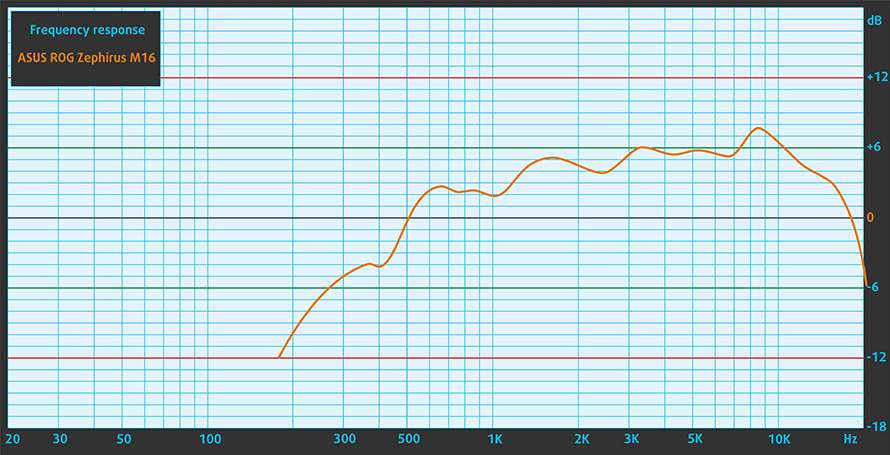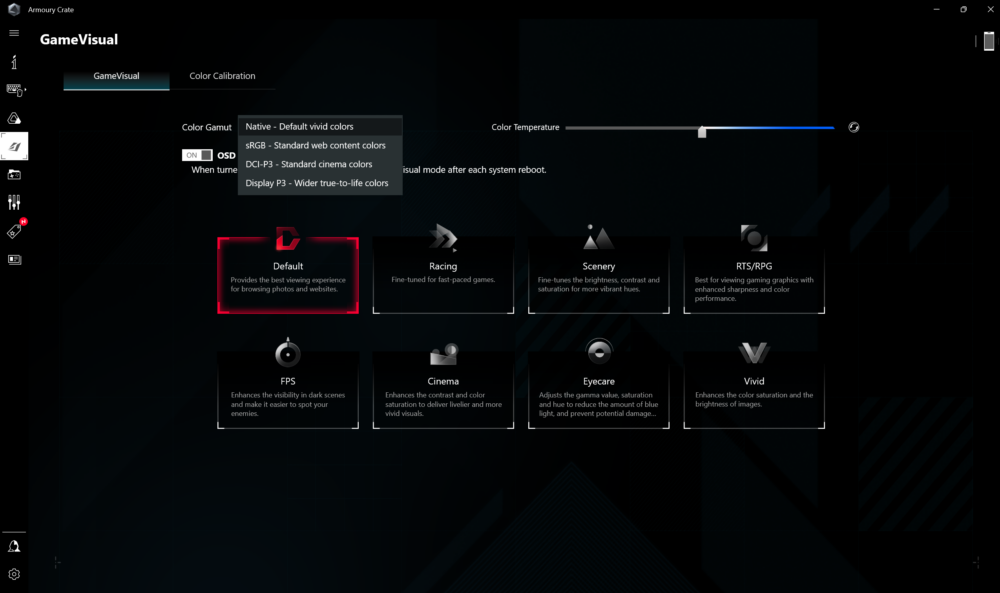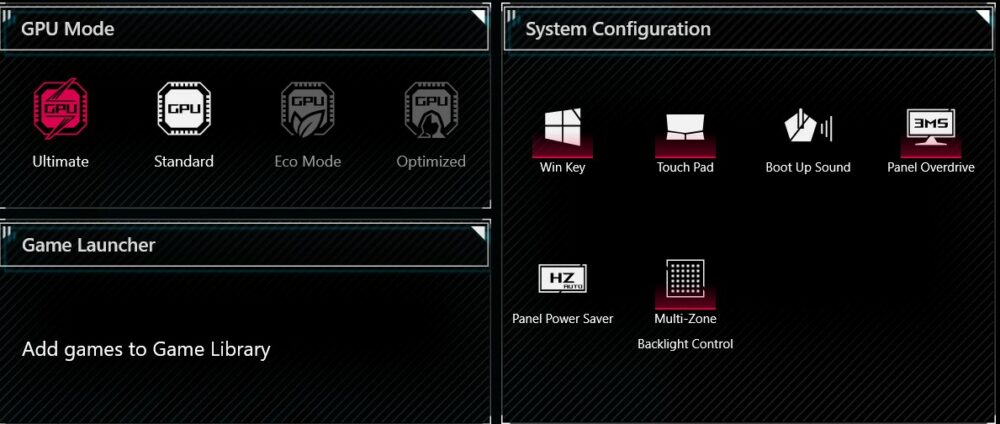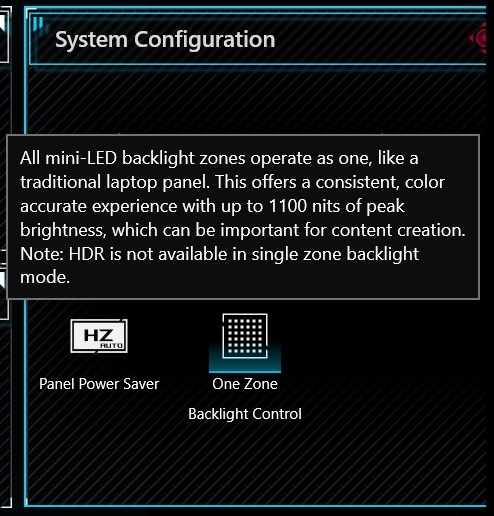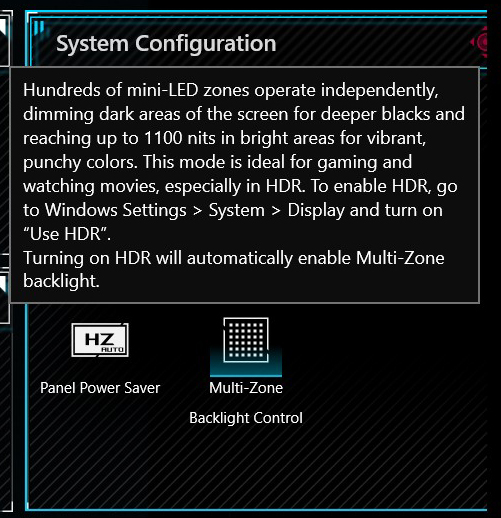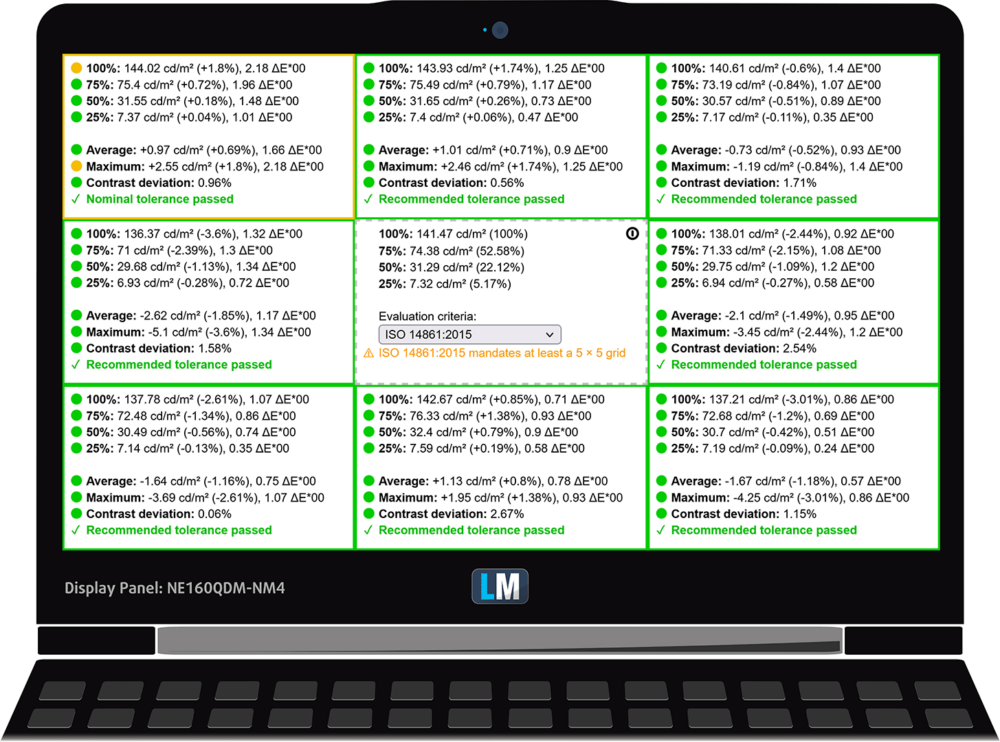ASUS ROG Zephyrus M16 (GU604, 2023) review – gaming devices can’t really get any better
Display quality, Health impact (PWM), Sound
ASUS ROG Zephyrus M16 (GU604, 2023) is equipped with an IPS panel, model number BOE NE160QDM-NM4 (BOE0B74). It comes with a 240Hz refresh rate. Its diagonal is 16″ (40.6 cm), and the resolution – 2560 x 1600p. Additionally, the screen ratio is 16:10, the pixel density – 178 ppi, and their pitch – 0.13 x 0.13 mm. The screen can be considered Retina when viewed from at least 46 cm (from this distance, the average human eye can’t see the individual pixels).
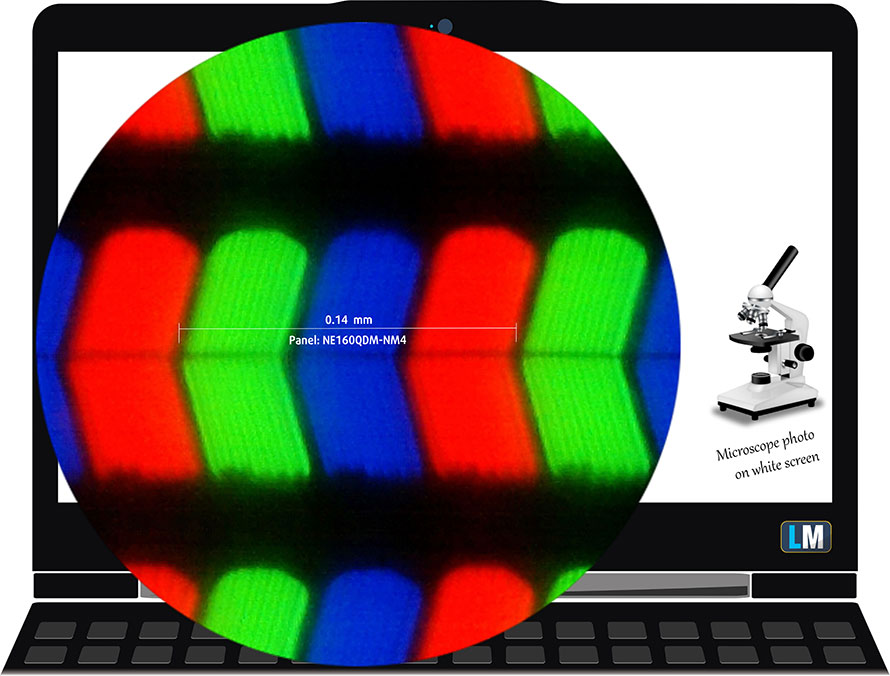
The maximum measured brightness is 501 nits (cd/m2) in the middle of the screen and 495 nits (cd/m2) average across the surface with a maximum deviation of only 4%. The Correlated Color Temperature on a white screen and at maximum brightness is 6280K (average) – slightly warmer than the 6500K optimum for sRGB (“GameVisual – Native – Default” in the Armoury Crate app).
In the illustration below you can see how the display performs from a uniformity perspective. The illustration below shows how matters are for operational brightness levels (approximately 140 nits).
Values of dE2000 over 4.0 should not occur, and this parameter is one of the first you should check if you intend to use the laptop for color-sensitive work (a maximum tolerance of 2.0). We measured a good contrast ratio – 1190:1 (ANSI Contrast, “GameVisual – Native – Default”, GPU Mode “Ultimate” “Multi-Zone Backlight Control”).
To make sure we are on the same page, we would like to give you a little introduction to the sRGB color gamut and the Adobe RGB. To start, there’s the CIE 1976 Uniform Chromaticity Diagram that represents the visible specter of colors by the human eye, giving you a better perception of the color gamut coverage and the color accuracy.
Inside the black triangle, you will see the standard color gamut (sRGB) that is being used by millions of people on HDTV and on the web. As for the Adobe RGB, this is used in professional cameras, monitors, etc for printing. Basically, colors inside the black triangle are used by everyone and this is the essential part of the color quality and color accuracy of a mainstream notebook.
Still, we’ve included other color spaces like the famous DCI-P3 standard used by movie studios, as well as the digital UHD Rec.2020 standard. Rec.2020, however, is still a thing of the future and it’s difficult for today’s displays to cover that well. We’ve also included the so-called Michael Pointer gamut, or Pointer’s gamut, which represents the colors that naturally occur around us every day.
The yellow dotted line shows ASUS ROG Zephyrus M16 (GU604, 2023)’s color gamut coverage.
Its display covers 99% of the sRGB/ITU-R BT.709 (web/HDTV standard) in CIE1976, and 98% of DCI-P3, ensuring a super vibrant and attractive picture.
The Armoury Crate app emulates both the DCI-P3 and the sRGB color gamut.
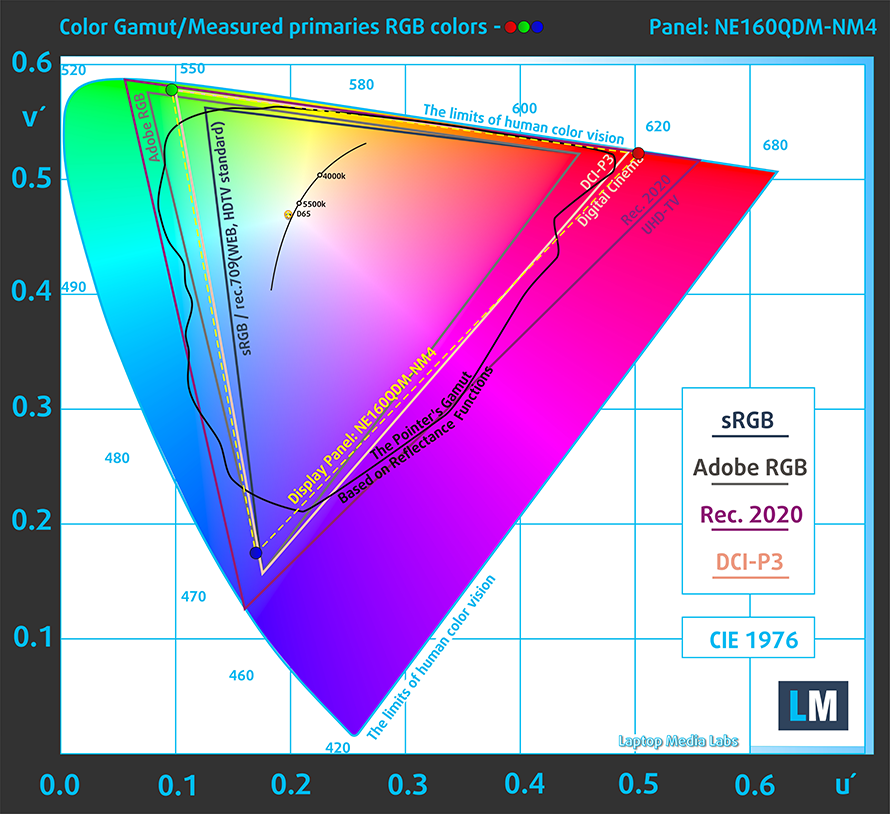
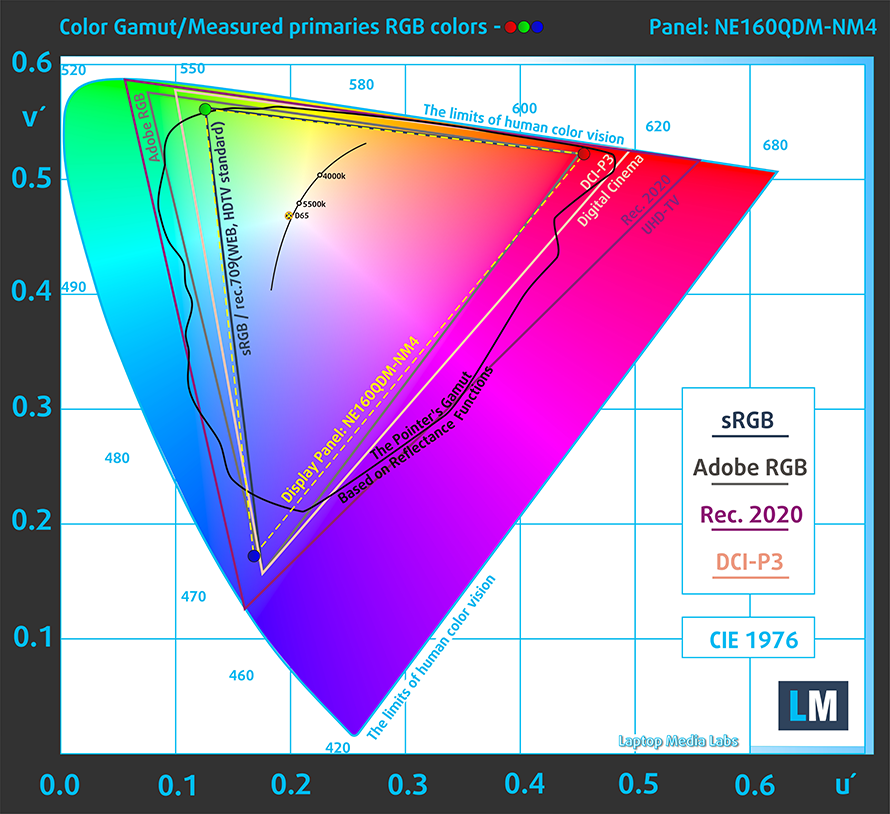
We tested the accuracy of the display with 24 commonly used colors like light and dark human skin, blue sky, green grass, orange, etc.
Below you can compare the scores of the ASUS ROG Zephyrus M16 (GU604, 2023) (“Armoury Crate”: “GameVisual – sRGB – Default”; HDR off) with the default settings sRGB.
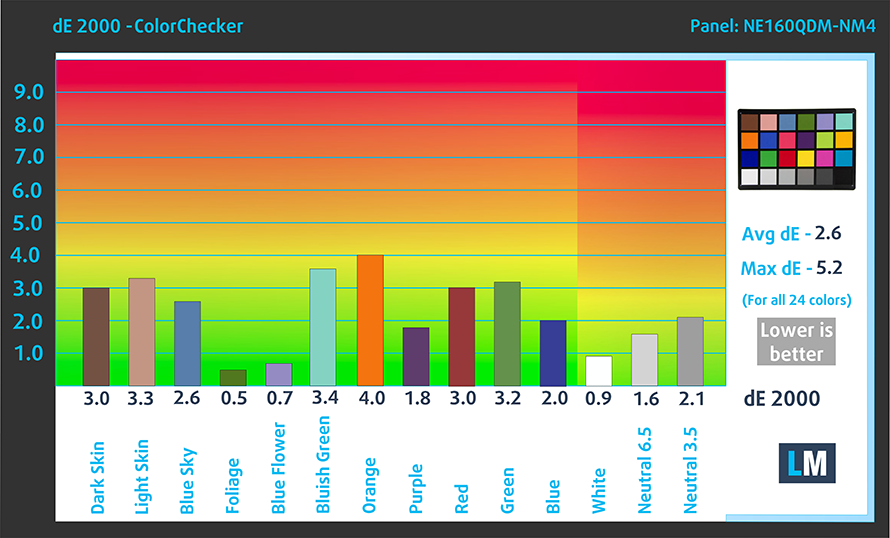
In addition, here are the results compared to the DCI-P3 gamut.
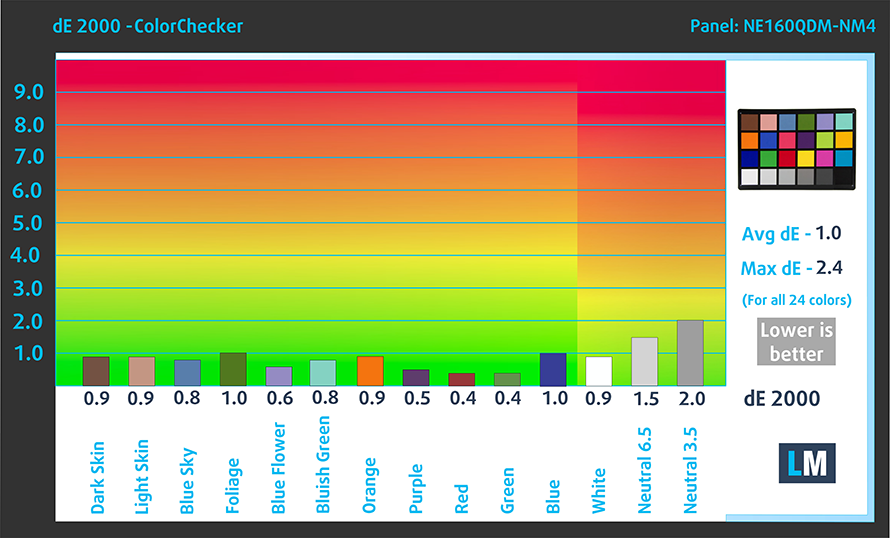
The next figure shows how well the display is able to reproduce really dark parts of an image, which is essential when watching movies or playing games in low ambient light.
The left side of the image represents the display with stock settings, while the right one is with the “Gaming and Web Design” profile activated. On the horizontal axis, you will find the grayscale, and on the vertical axis – the luminance of the display. On the two graphs below you can easily check for yourself how your display handles the darkest nuances but keep in mind that this also depends on the settings of your current display, the calibration, the viewing angle, and the surrounding light conditions.
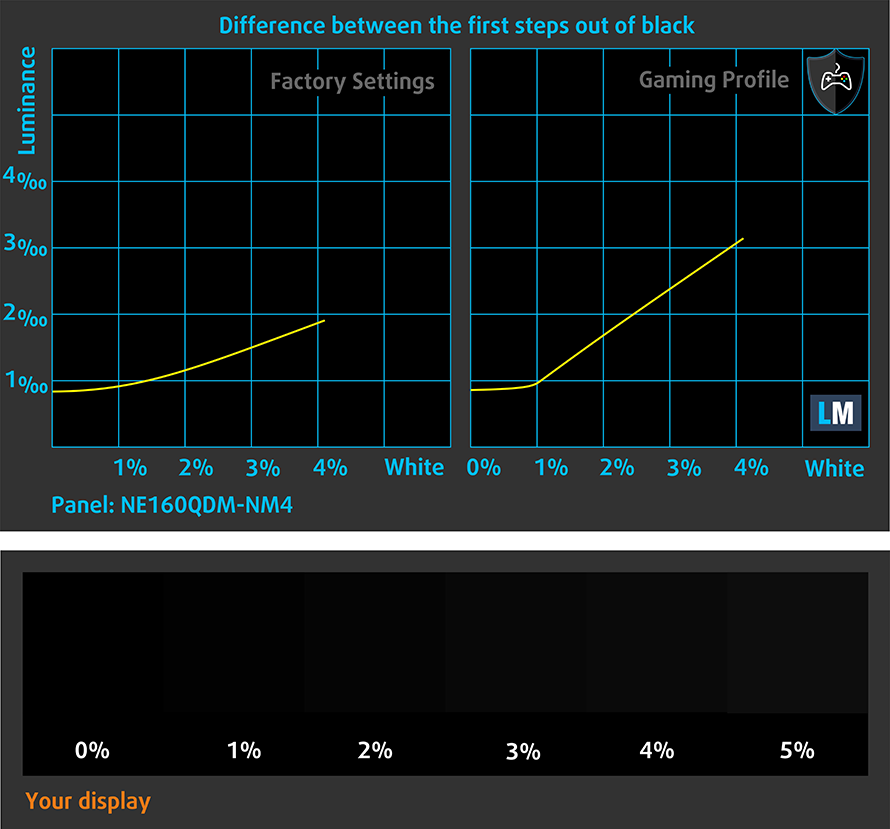
Response time (Gaming capabilities)
We test the reaction time of the pixels with the usual “black-to-white” and “white-to-black” method from 10% to 90% and vice versa.
We recorded Fall Time + Rise Time = 9 ms.
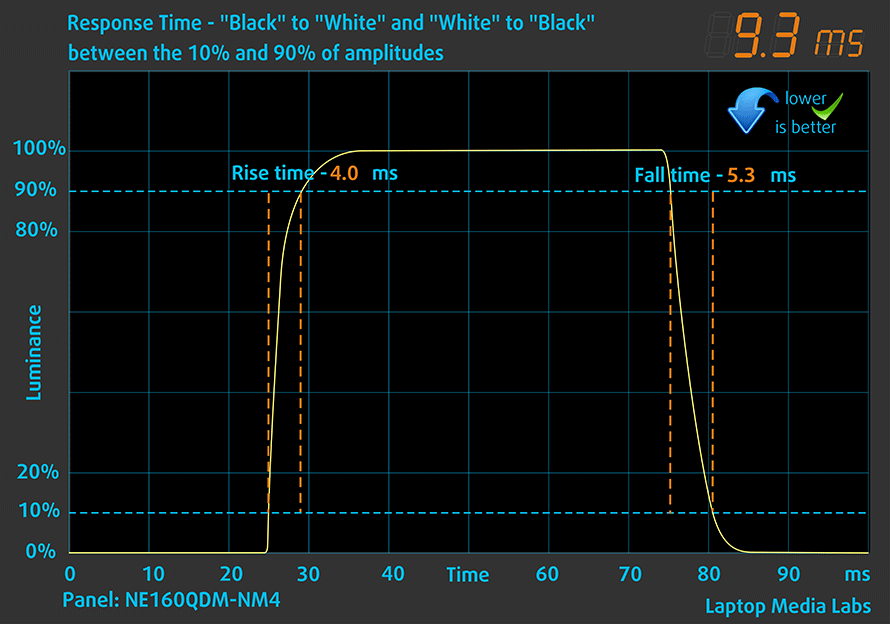
Health Impact: PWM (Screen flickering)
Pulse-width modulation (PWM) is an easy way to control monitor brightness. When you lower the brightness, the light intensity of the display is not lowered, but instead turned off and on by the electronics with a frequency indistinguishable to the human eye. In these light impulses, the light/no-light time ratio varies, while brightness remains unchanged, which is harmful to your eyes. You can read more about that in our dedicated article on PWM.
ASUS ROG Zephyrus M16 (GU604, 2023)’s backlight has considerable pulsations. Their frequency is high, but the filling coefficient is very low. The last segment of the chart below is from another display, which has a similar maximum brightness but does not use PWM. The light sensor we use has a linear characteristic in a wide range of Luminance. Even if it has been out of range, these pikes of illuminated light are pretty huge and uncomfortable for your eyesight.

Health Impact: Blue light emissions
Installing our Health-Guard profile not only eliminates PWM but also reduces the harmful Blue Light emissions while keeping the colors of the screen perceptually accurate. If you’re not familiar with the Blue light, the TL;DR version is – emissions that negatively affect your eyes, skin, and your whole body. You can find more information about that in our dedicated article on Blue Light.
Health Impact: Gloss-level measurement
Glossy-coated displays are sometimes inconvenient in high ambient light conditions. We show the level of reflection on the screen for the respective laptop when the display is turned off and the measurement angle is 60° (in this case, the result is 59.3 GU).
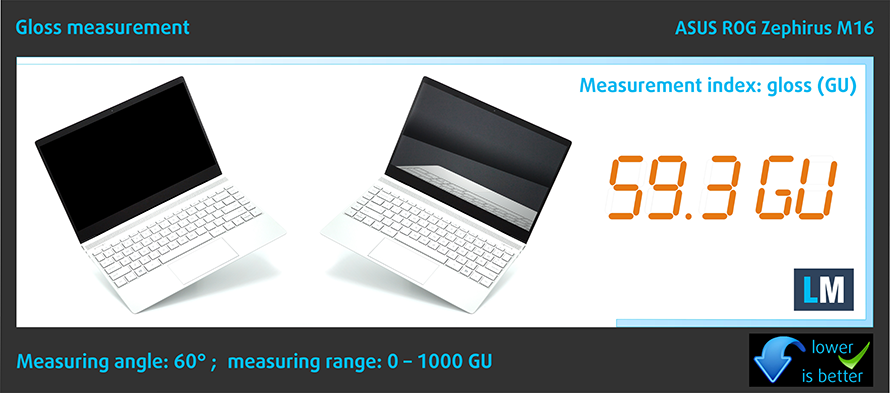
Sound
ASUS ROG Zephyrus M16 (GU604, 2023)’s speakers produce a sound of very good quality. Its low, mid, and high tones are clear of deviations.
